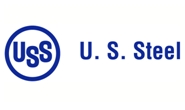Steel Mills

U.S. Steel Seeks Dismissal of Fraud Case
Written by Sandy Williams
September 27, 2018
U.S. Steel seeks dismissal of a lawsuit which alleges that the much touted “Carnegie Way” was a “sham” based on “fabricated cost savings.” The plaintiffs’ suit against U.S. Steel alleges the company is guilty of deception, dissembling and fraud.
A group of shareholders filed a class action suit for violations of the federal securities laws in October following a dismal loss by U.S. Steel in first-quarter 2017. The lawsuit covers the period from January 2016 to April 25, 2017.
In 2014, CEO and President Mario Longhi hired McKinsey & Co. to help the company become profitable again after several years of losses. The “transformational process” was named the “Carnegie Way” and was comprised of three elements: 1) employee engagement, 2) proactive and reliability centered maintenance of operations and facilities and 3) operational excellence related to process improvements to save U.S. Steel money.
Confidential witnesses for the plaintiffs said the Carnegie Way was a sham. The complaint states:
“Although the Carnegie Way purportedly consisted of three elements, it was widely known throughout the Company that the only element actually implemented was Operational Excellence which, according to Plaintiffs’ confidential sources, was ‘all about cost cutting at the expense of operations.’”
According to the plaintiffs’ sources, plant managers were only allowed to buy parts when absolutely necessary and were told to “jury-rig” machines to keep them operating. During the downturn of the steel market in 2015, U.S. Steel implemented extreme cost-cutting measures under the Carnegie Way, including mass layoffs and deferring “desperately needed maintenance and repairs.” Capacity utilization rates fell as low as 57 percent due to unplanned outages and missed steel production.
Despite, dire circumstances at the mills, U.S. Steel continued to reassure shareholders that the Carnegie Way was working and that it was about “much more than a cost cutting initiative.”
“We have achieved sustainable cost improvements through process efficiencies and our investments in reliability centered maintenance (RCM), and we will continue to find process improvements that enable us to better serve our customers and reward our stakeholders,” said the company.
According to sources cited by the plaintiffs, in reality extreme cost cutting was the only measure that U.S. Steel was implementing under the Carnegie Way.
Despite improvements in the global steel economy, U.S. Steel was unable to capitalize on better market conditions because of repairs and outages. In August 2016, U.S. Steel sold 21.7 million shares to investors raising proceeds of $482 million that the company said would be used for “financial flexibility, capital expenditures and other general corporate purposes.” The company later admitted that the funds were needed to establish an asset revitalization plan that could fix its equipment issues. In November 2016, U.S. Steel reported that third-quarter results were impacted by “unplanned outages” that reduced flat-rolled segments by about 5 percent or 125,000 tons.
The company continued to reassure shareholders while privately telling the International Trade Commission that its financial results were insufficient for the investments that were needed.
U.S. Steel continued assuring investors into 2017 that U.S. Steel was improving and “positioned for success in a market recovery.” Shareholders were expecting a strong profit in the first quarter, but were shocked when the company instead posted a net loss of $180 million. Analysts were surprised by the results in a market where U.S. steel prices were high and the industry was enjoying significant protection from steel imports. Analysts offered a variety of explanations saying the loss was “company specific,” cuts were too deep under the Carnegie Way and the company focused too much on trade lobbying than fixing the mills. A lack of transparency to investors and shareholders was cited.
In May 2017, Mario Longhi retired as CEO and was replaced by David Burritt. Longhi received a $4.35 million bonus for 2016. Both men received what the plaintiffs called “excessive compensation” for their roles at U.S. Steel.
“The Individual Defendants had a considerable incentive to take steps to see that the stock price remained high, including their abject failure to properly invest in the Company so that its performance could improve concomitant with steel prices,” states the plaintiffs. “It was only when U.S. Steel’s abysmal earnings came out that the truth could no longer be concealed, and Defendants Longhi and Burritt began to reveal the truth of the dire situation, safeguarding their cash cow as long as possible.”
The plaintiffs hope to recoup billions of dollars of losses suffered by shareholders because of the alleged fraud by the company that included misleading statements regarding the “Carnegie Way initiative, maintenance spending, capital investments, plant outages and business prospects.”
U.S. Steel Seeks Dismissal of Case
A motion by U.S. Steel for dismissal of the case is currently before the U.S. District Court for the Western District of Pennsylvania.
U.S. Steel claims the company’s strength in first-quarter 2017 shows that the Carnegie Way program was effective in turning around the company. Net loss had shrunk by first-quarter 2017 and the first three quarters of the year netted positive earnings of $228 million.
U.S. Steel claims it made clear to shareholders that the Carnegie Way was a “journey and not a sprint.” The difficult decisions to idle facilities and reduce workforce both in the mills and in management resulted in some disgruntled ex-employees who disagreed with the Carnegie Way strategy, the company said.
“But that is not fraud,” said U.S. Steel in its motion to dismiss.” Disagreement with managerial decisions does not a claim for securities fraud make.”
The complainants charge that “everything the defendants said was misleading because the general caste of the statements should have been gloomier.”
“By far the more reasonable inference is that the defendants executed a complex strategy under difficult circumstances, made hard decisions they thought necessary to strengthen U.S. Steel, and the risks and uncertainties the Company faced were well-known. That U.S. Steel fell short of analyst expectations in one quarter at the end of the class period and saw a stock price dip does not remotely raise an inference that the people running it were liars and cheats.
“Compared to the start of the class period, U.S. Steel is dramatically stronger now. Rather than allow this case to linger and divert significant management time and attention, not to mention money, the Court should dismiss the Complaint and allow the Company to focus on its ongoing program of reform and growth, consistent with Congress’ intent in adopting the Private Securities Litigation Reform Act.”

Sandy Williams
Read more from Sandy WilliamsLatest in Steel Mills

Nucor names Batterbee, Bledsoe to HR roles
Nucor Corp. has promoted Thomas J. Batterbee to the position EVP of human resources and talent and appointed Elizabeth Bledsoe to the newly created position of president of human resources and talent.

Millett sees tariffs, CORE case benefiting SDI
Steel Dynamics' top exec thinks Trump’s tariff policies, as well as the results from the recent CORE case, will prove advantageous to the Fort Wayne, Ind.-based steelmaker and aluminum company.

USW digs in on opposition to USS-Nippon deal
“We remain deeply concerned about the national and economic security implications of the subject transaction,” the union stated in the letter dated April 21.

SDI’s Q1 earnings slump on-year, but up sequentially
SDI earnings slip in first quarter year over year, but are up sequentially.

POSCO inks MoU with Hyundai on Louisiana EAF mill
POSCO has signed a Memorandum of Understanding (MoU) with Hyundai Motor Group that includes an equity investment in Hyundai’s previously announced EAF mill set to be built in Louisiana.
